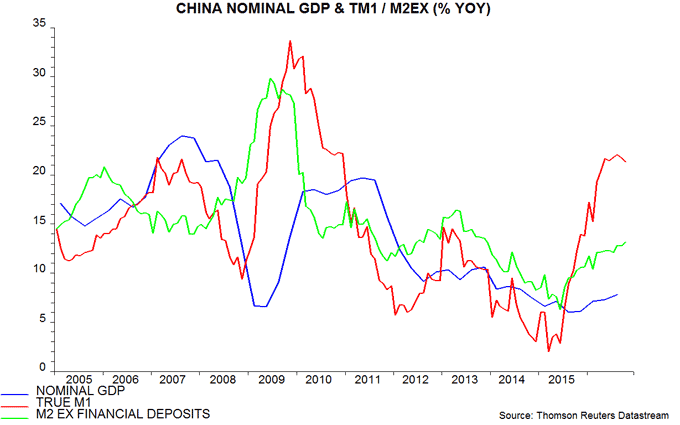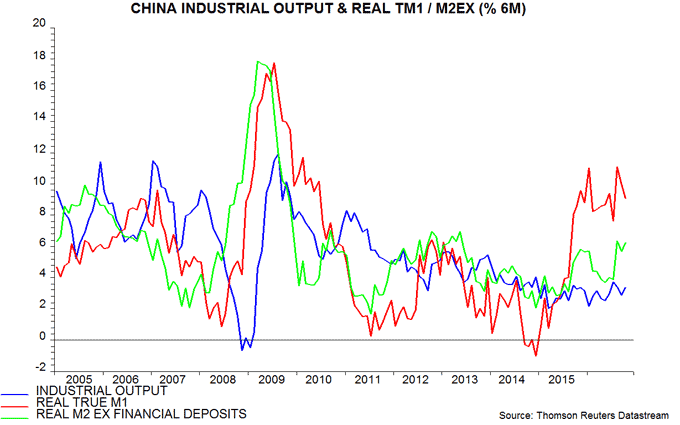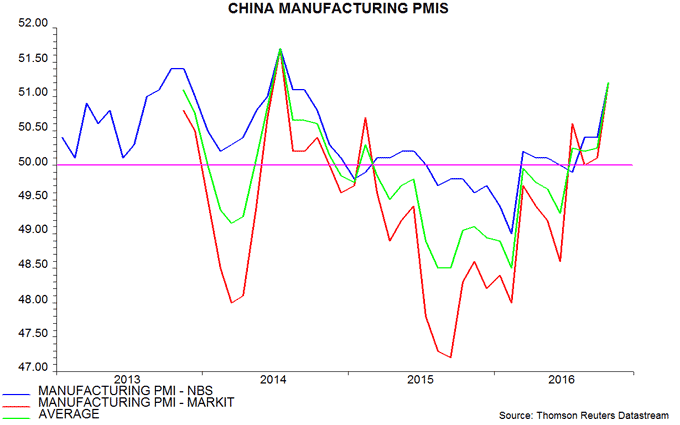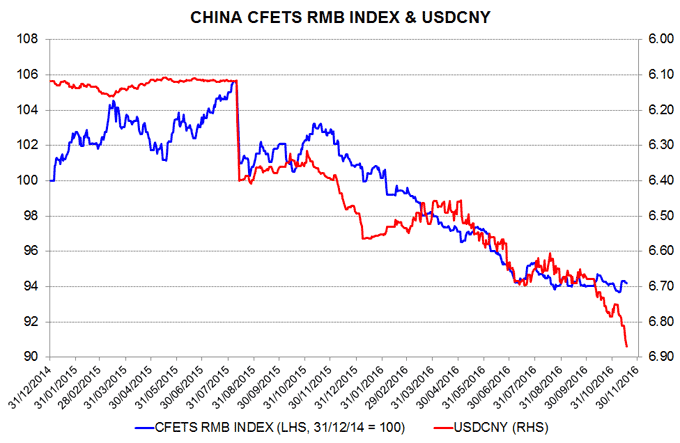Chinese reflation on track, RMB stable
Chinese monetary trends continue to give a positive message for economic prospects. The renminbi, meanwhile, has been stable recently, with weakness against a strong US dollar offset by appreciation against other constituents of the PBoC’s currency basket.
The official M1 and M2 money measures are regarded here as flawed – M1 excludes household demand deposits, which are relevant for assessing consumption prospects, while M2 trends in recent years have been distorted by large swings in financial sector deposits. The analysis in previous posts, therefore, has focused on M1 plus household demand deposits – “true M1” – and M2 excluding financial deposits.
Annual growth of true M1 reached a high of 22.1% in August and remained strong, at 21.3%, in October. Annual growth of M2 excluding financial deposits, meanwhile, rose further to 13.2% in October, the fastest since 2013 – see first chart.
Rising growth of the two money measures since mid-2015 has been reflected in a pick-up in annual nominal GDP expansion in 2016. This pick-up should continue into early 2017, even assuming that annual true M1 growth peaked in August – the lead from money to nominal GDP expansion has been at least six months in recent years.
The second chart shows six-month changes in industrial output and the money measures expressed in real terms (i.e. deflated by consumer prices). Industrial output growth has picked up by less than was expected here on the basis of real money trends, partly reflecting economic “rebalancing” away from heavy industry. Strong October manufacturing PMIs, however, suggest that momentum will rise in late 2016 – third chart.

The recent further fall of the renminbi against the US dollar has prompted speculation that the authorities either desire a weaker exchange rate or have been unable to offset capital outflows. Measured against the PBoC’s currency basket, however, the renminbi has been broadly stable since mid-year, following a managed depreciation during the first half – fourth chart.

Reader Comments